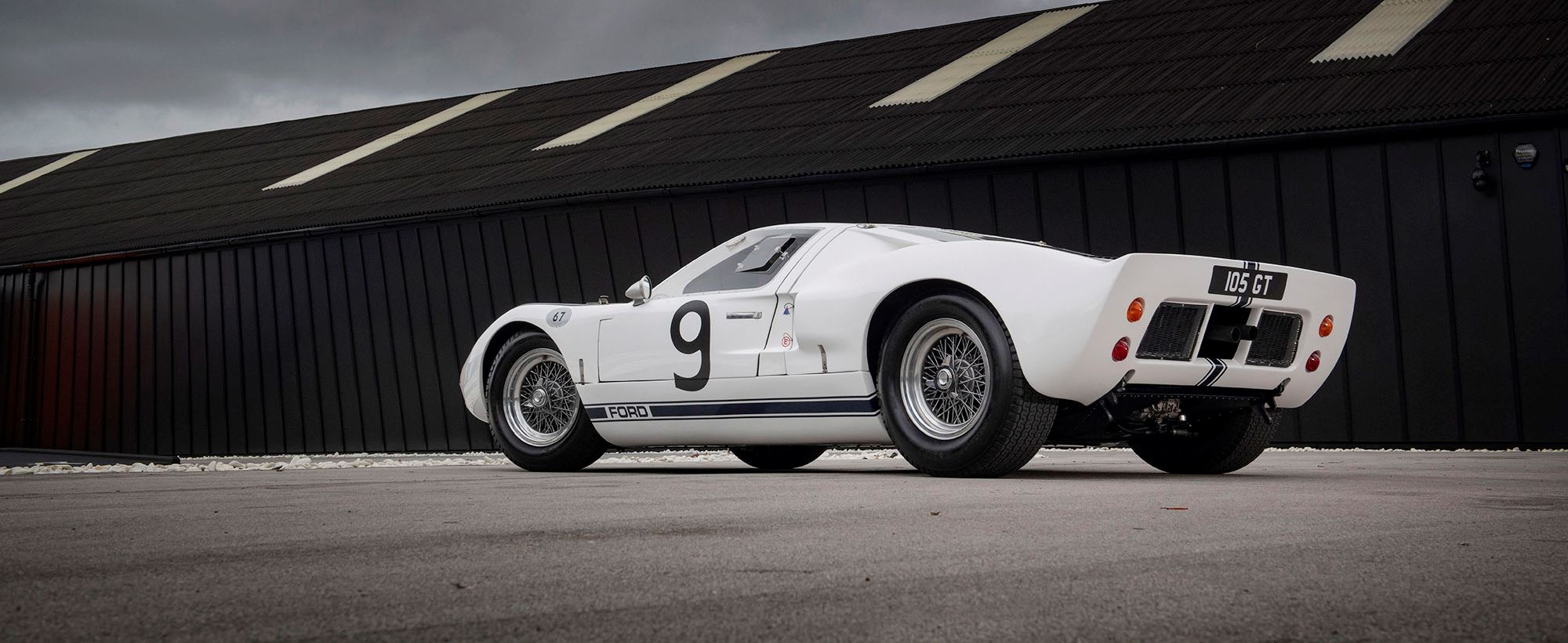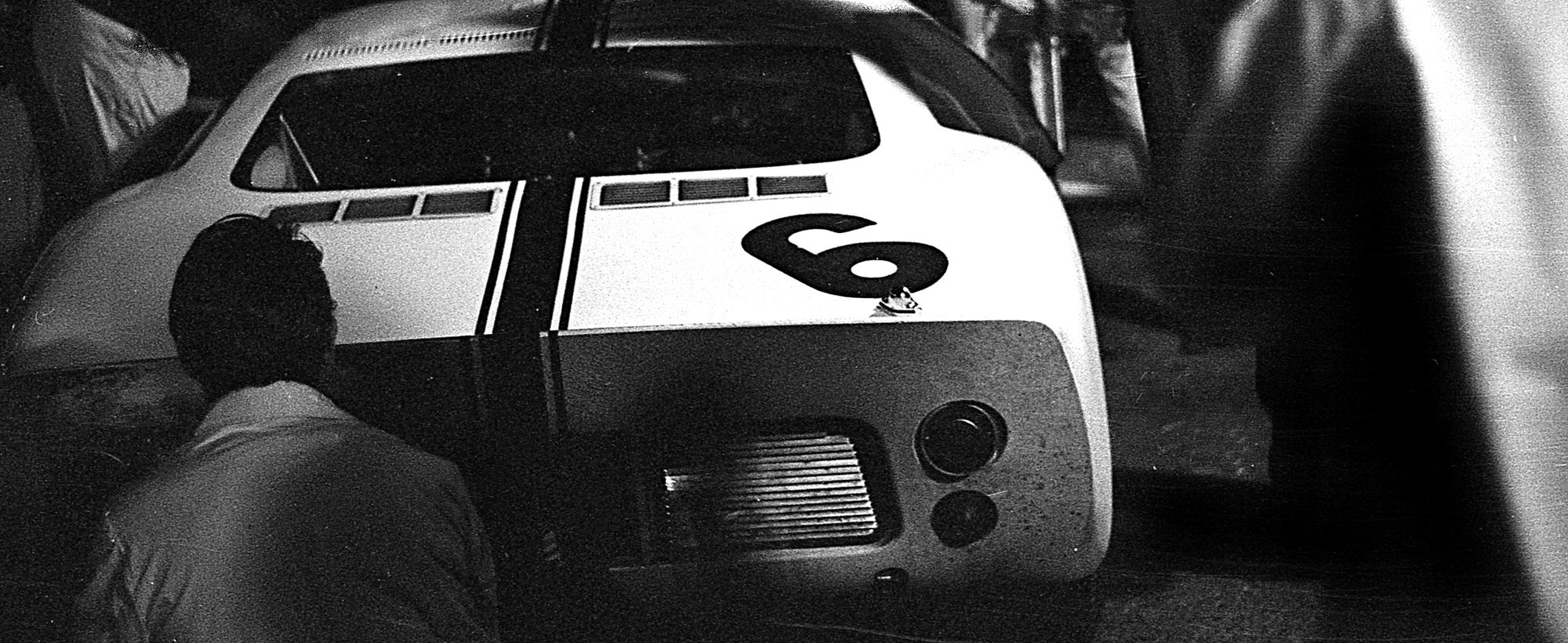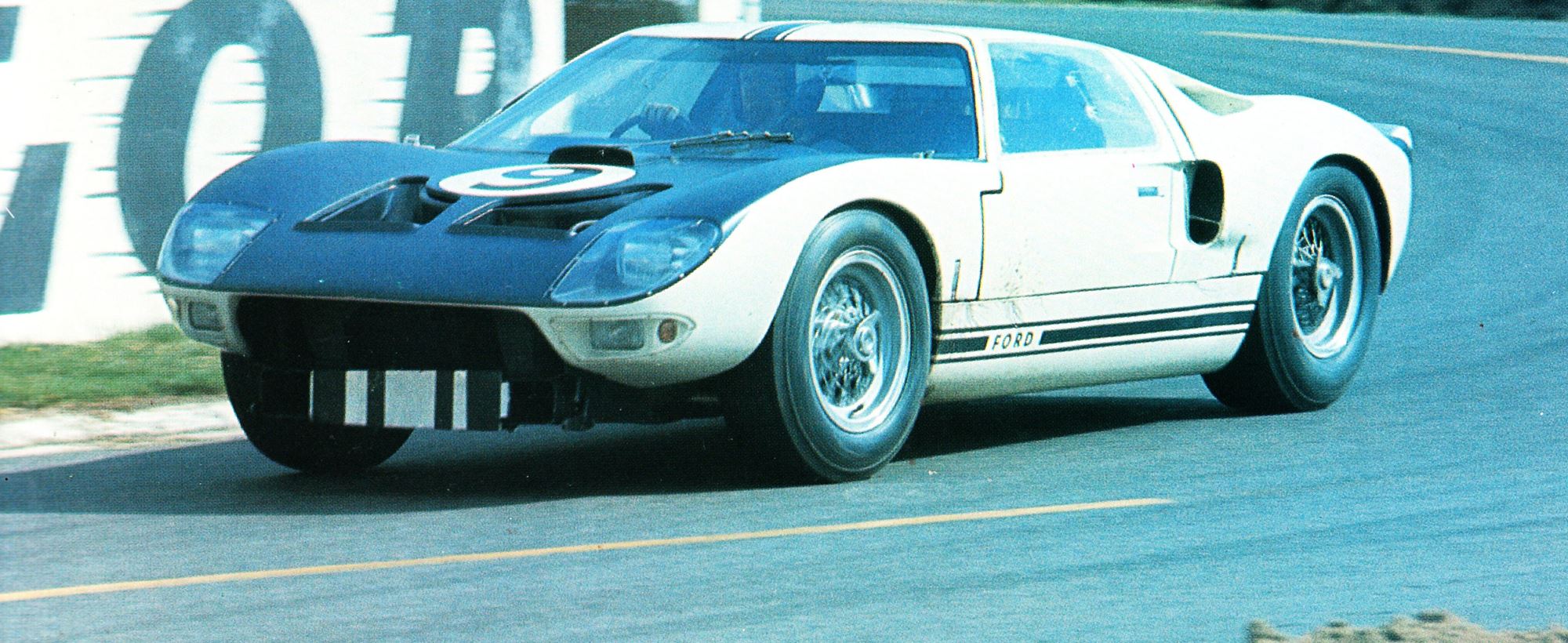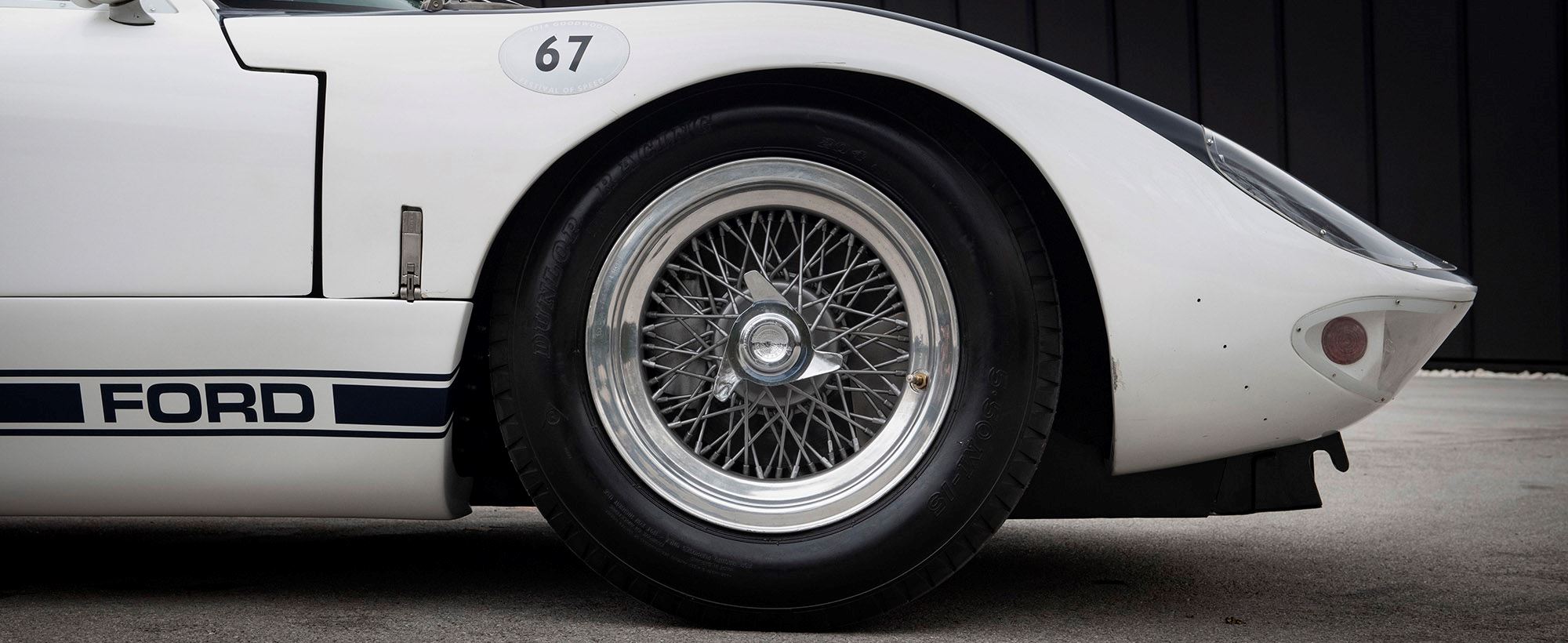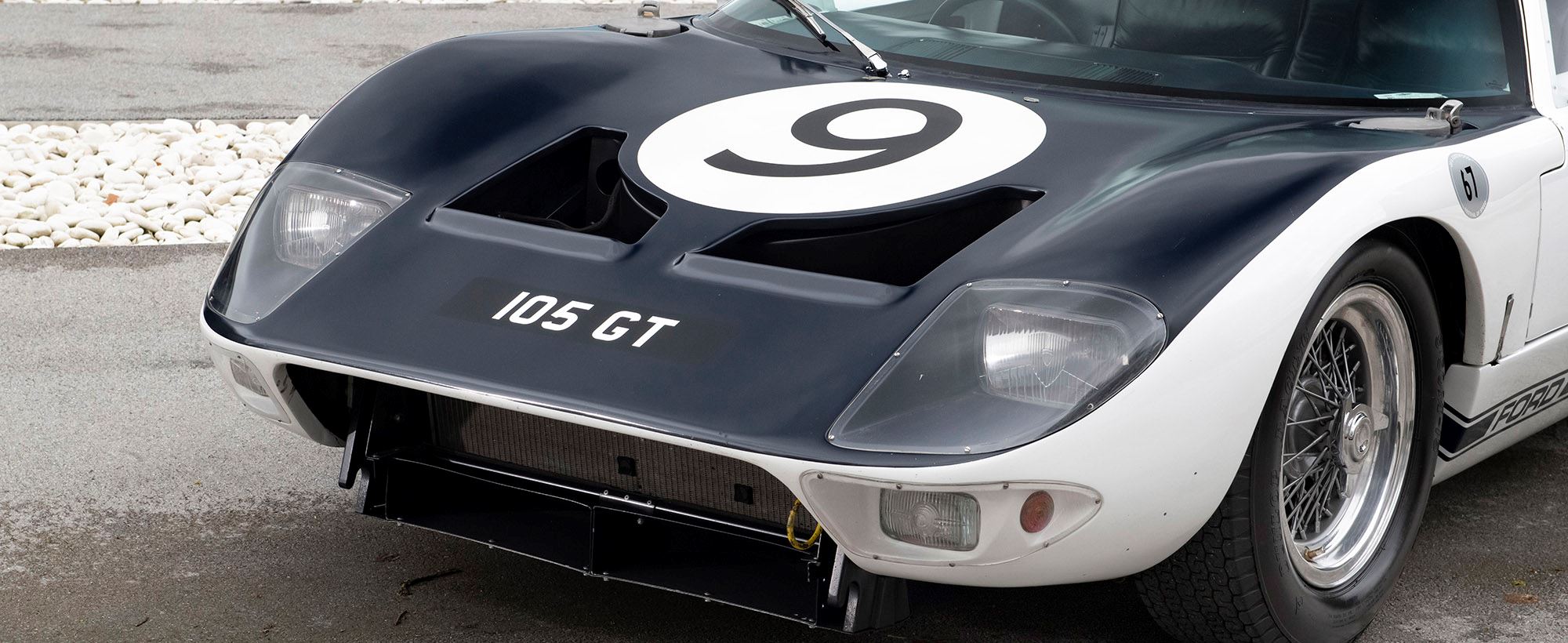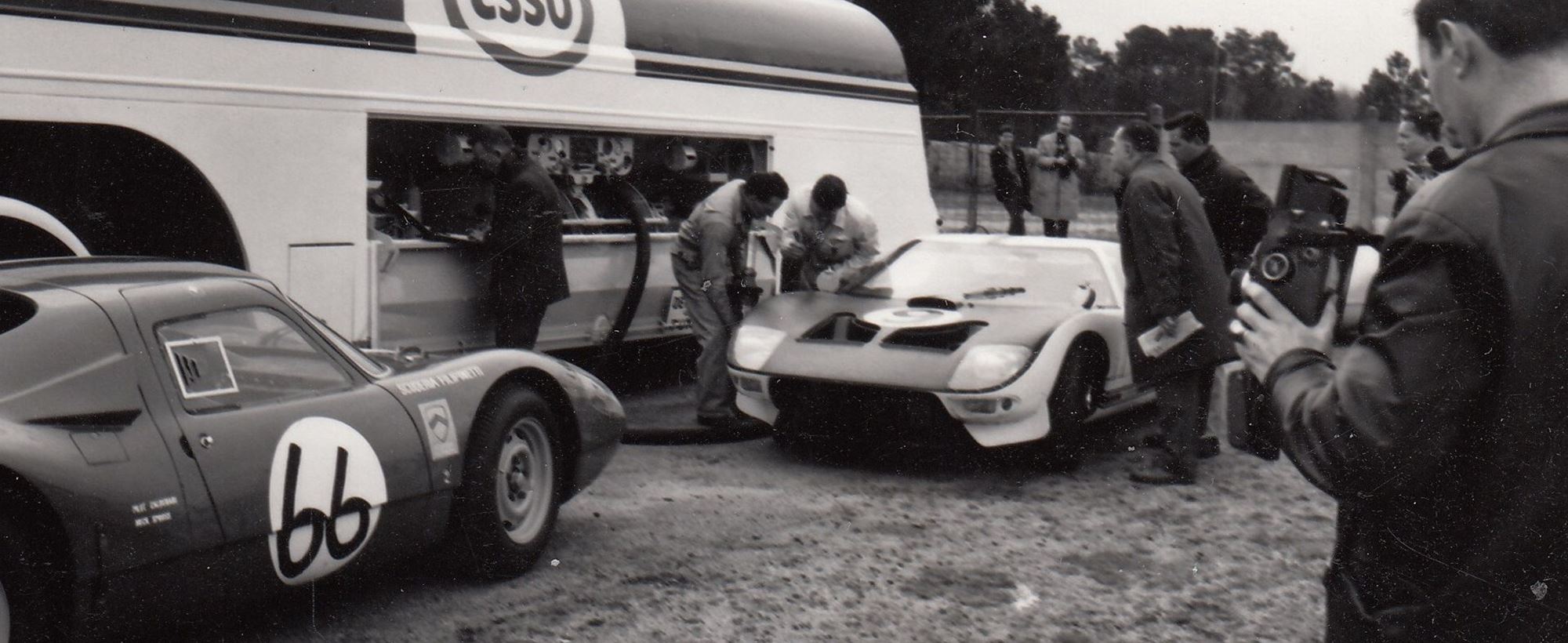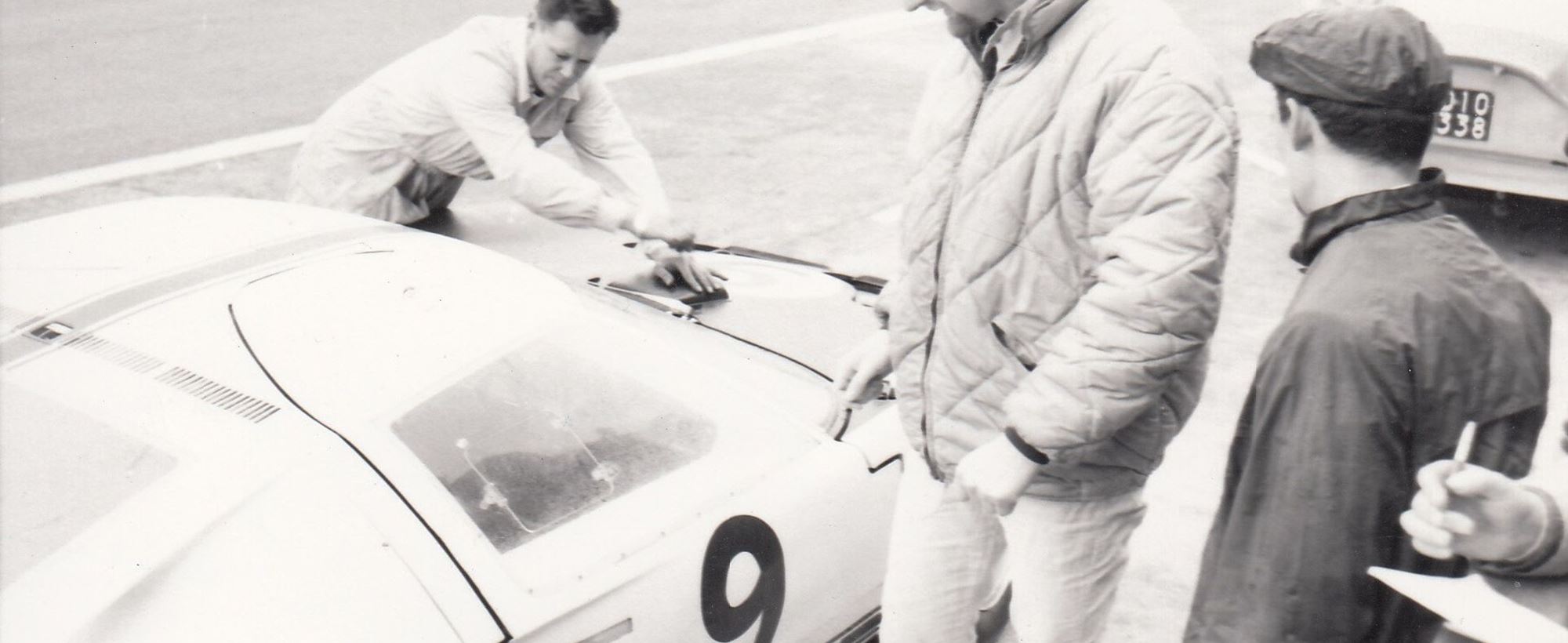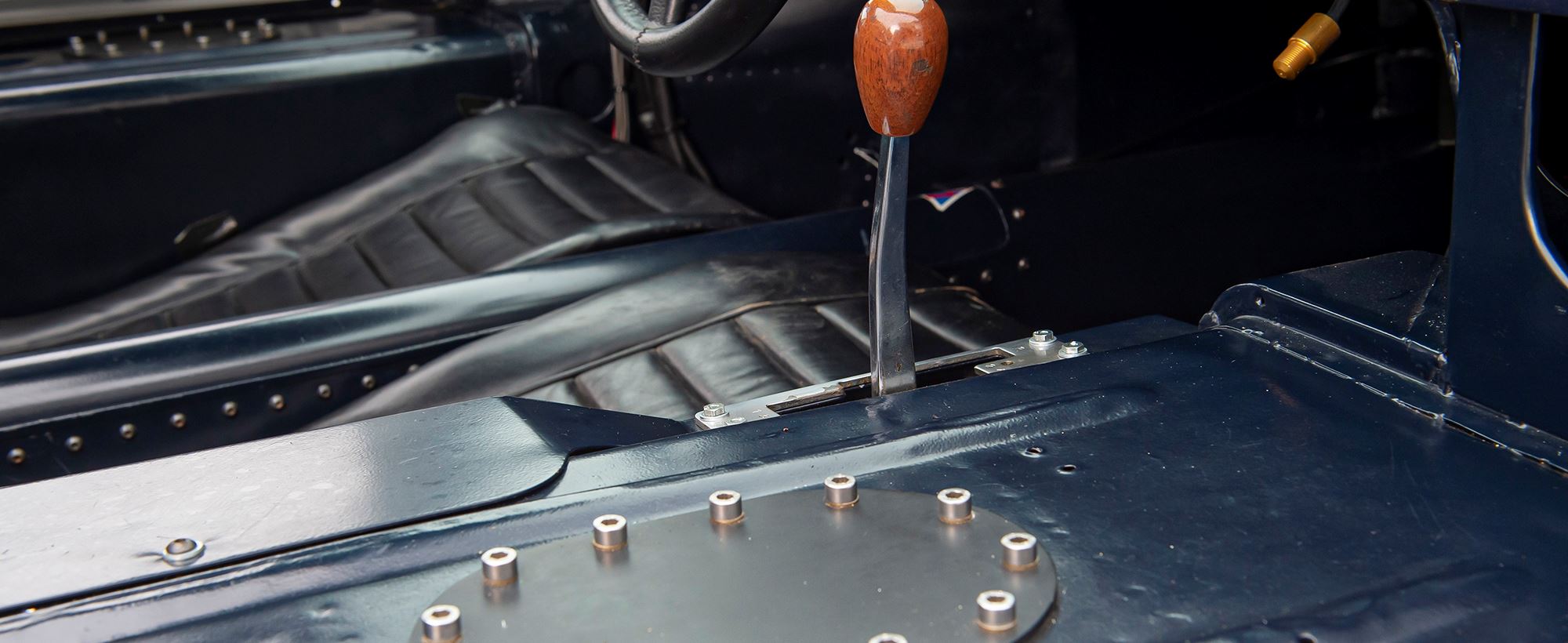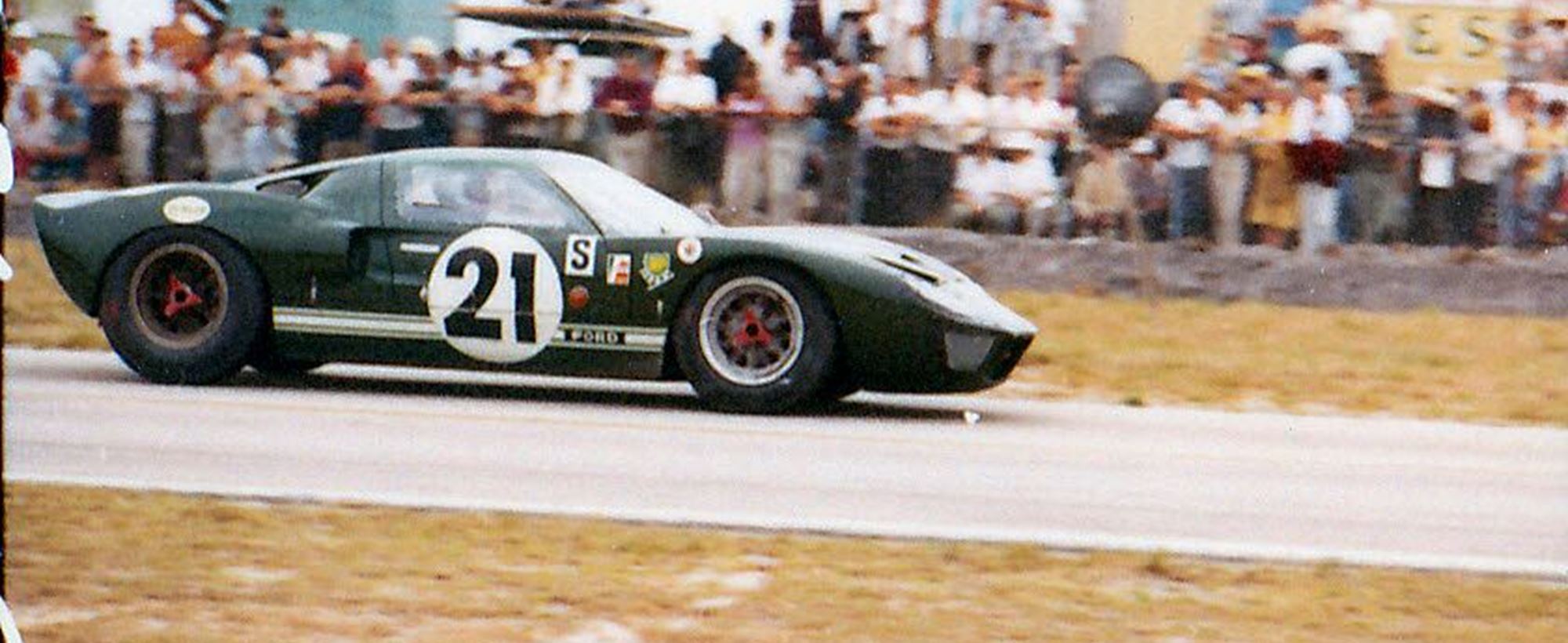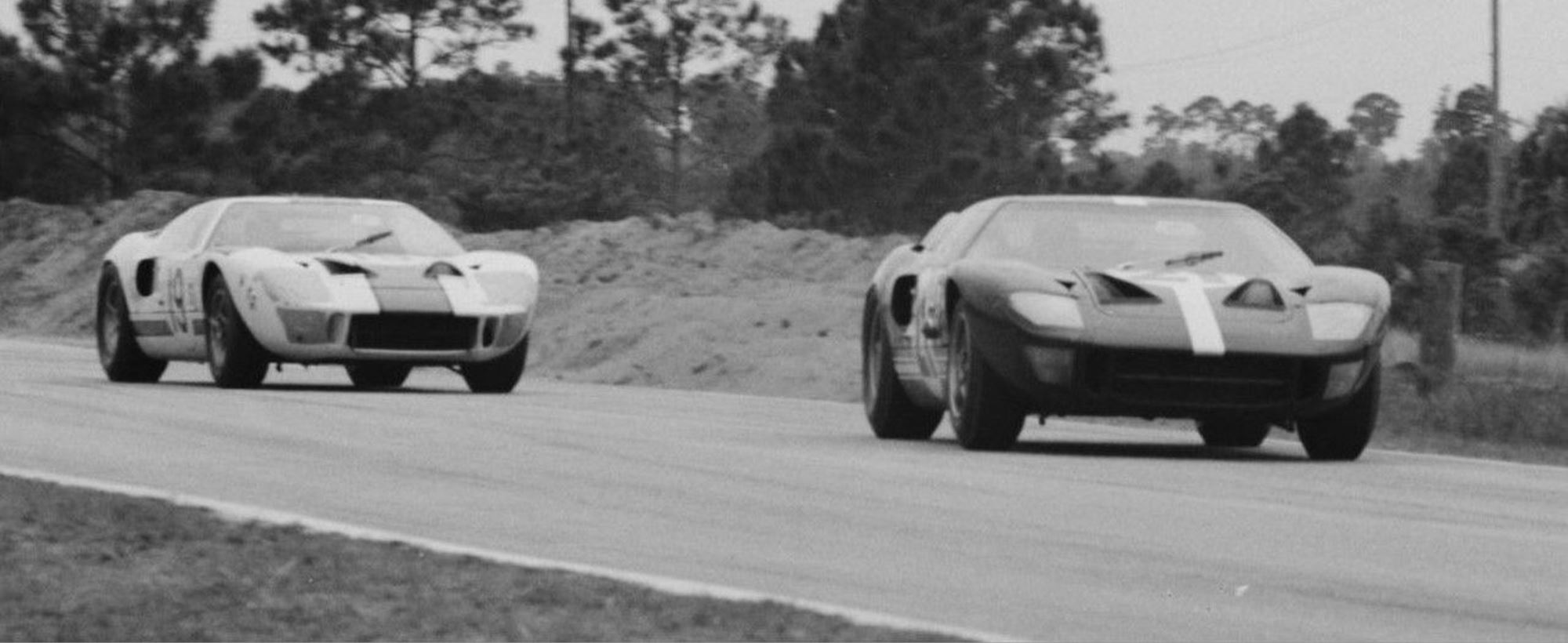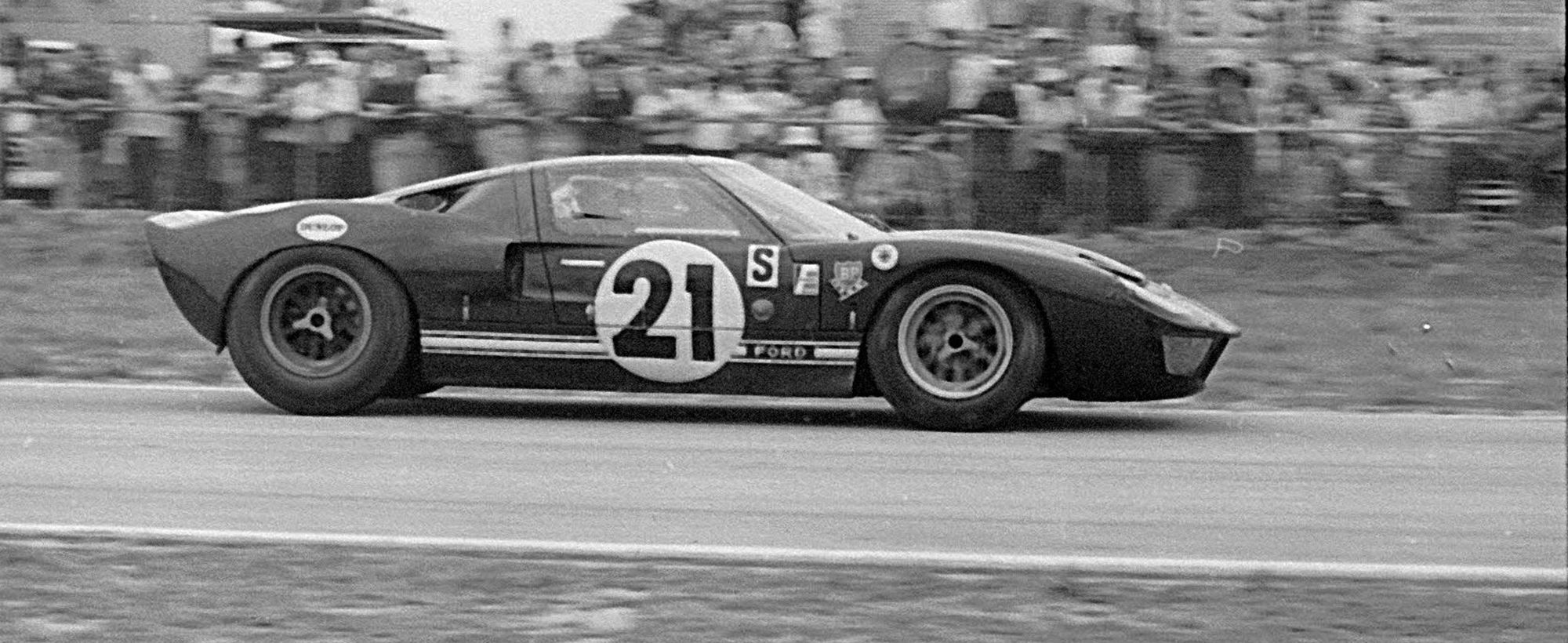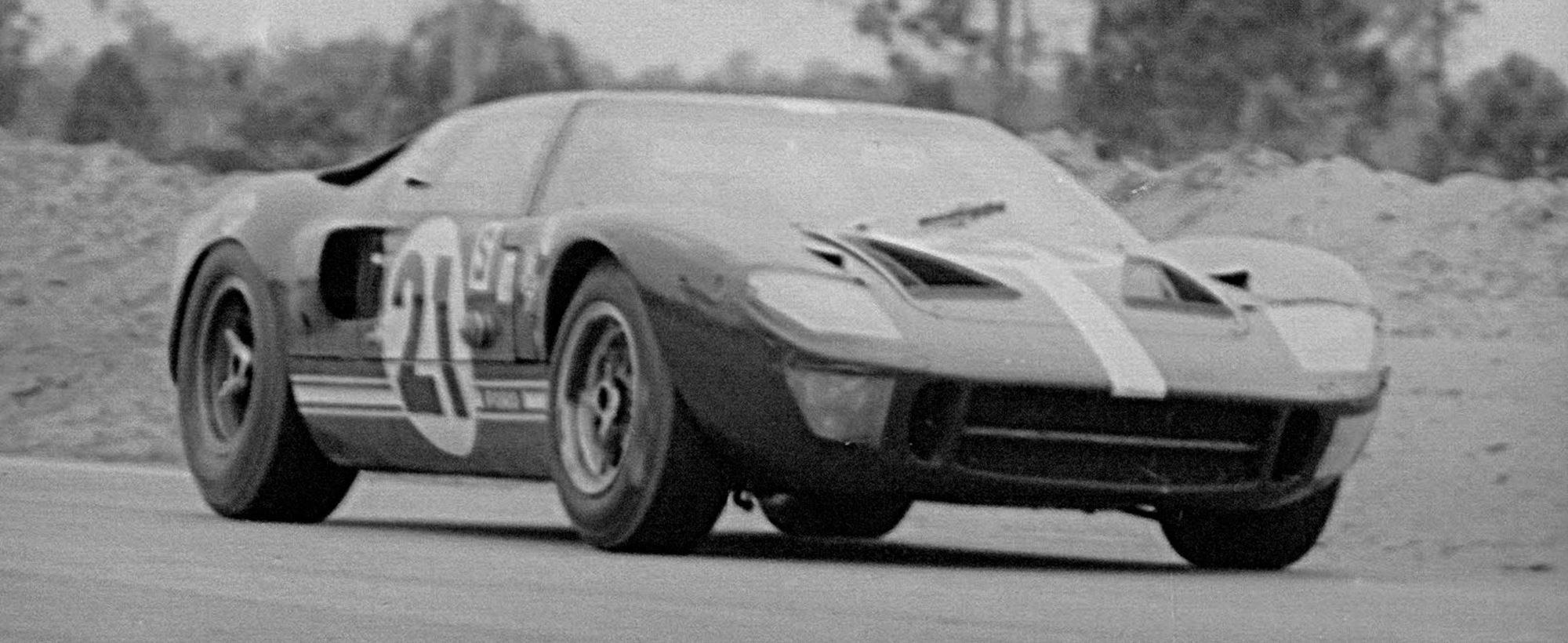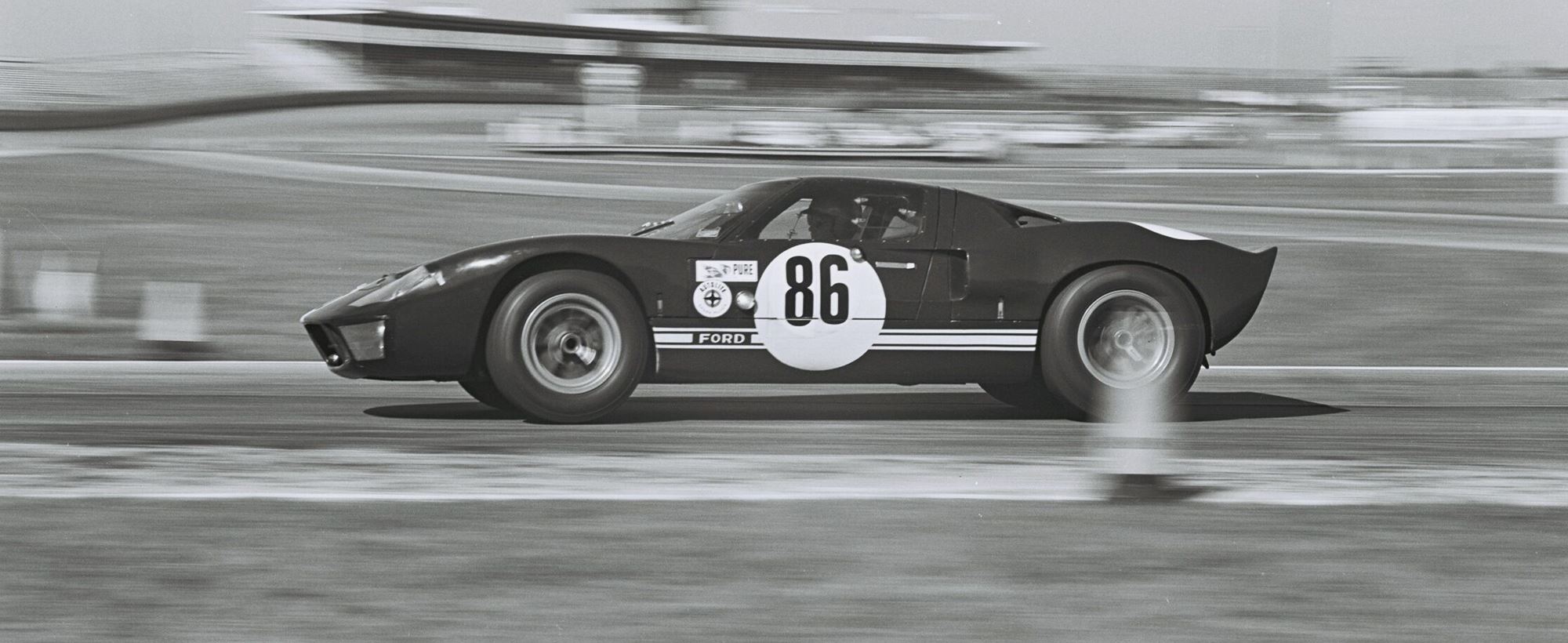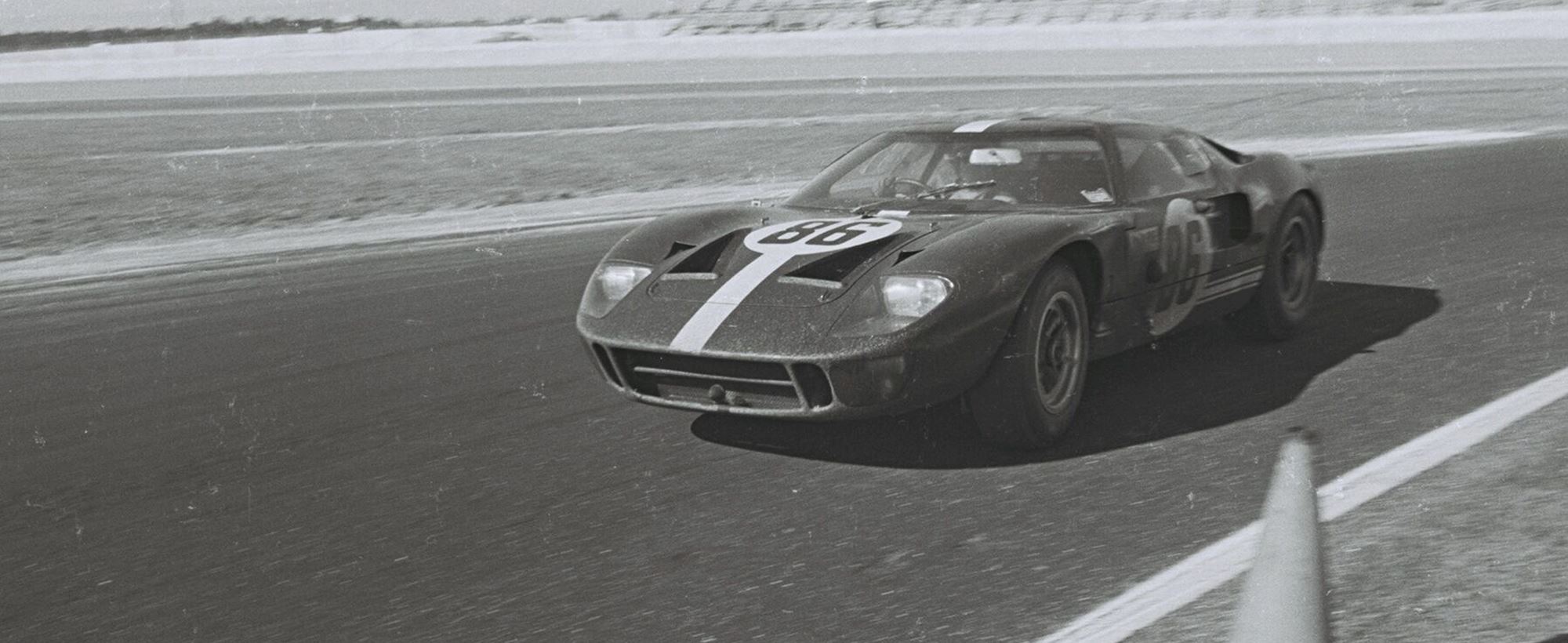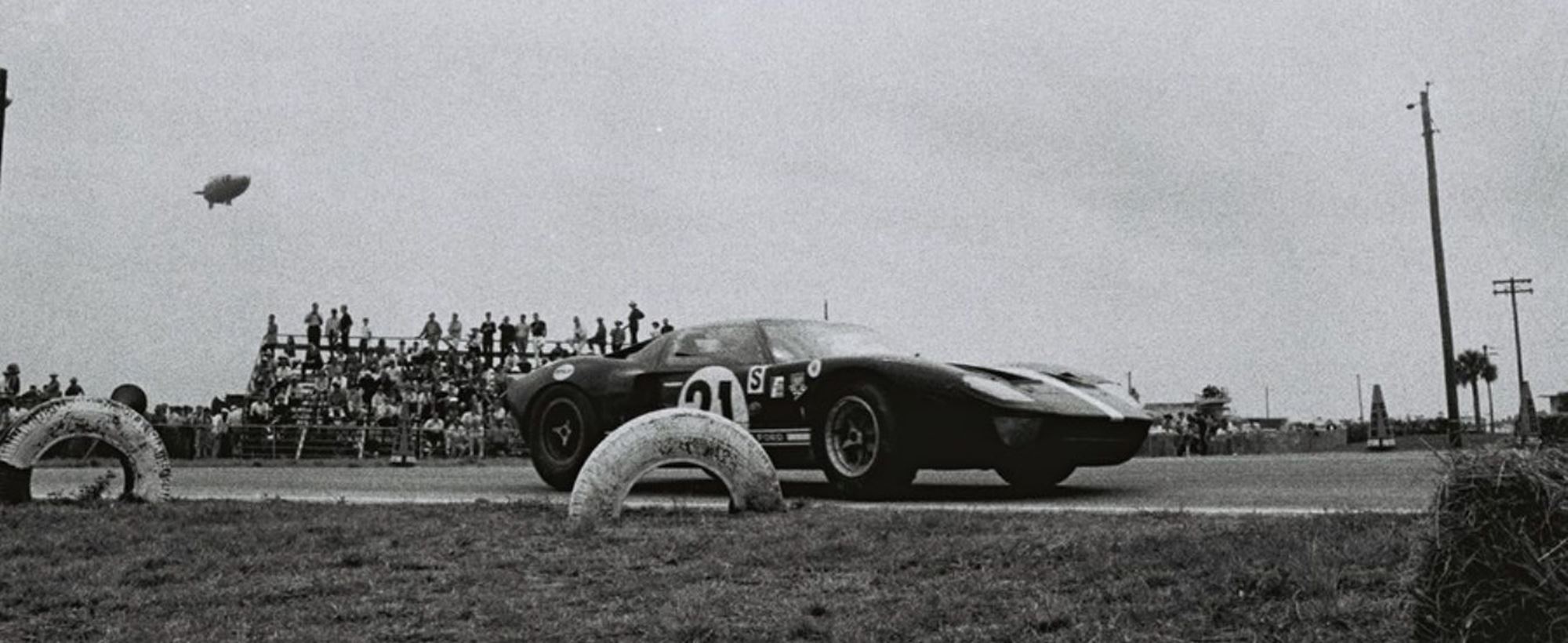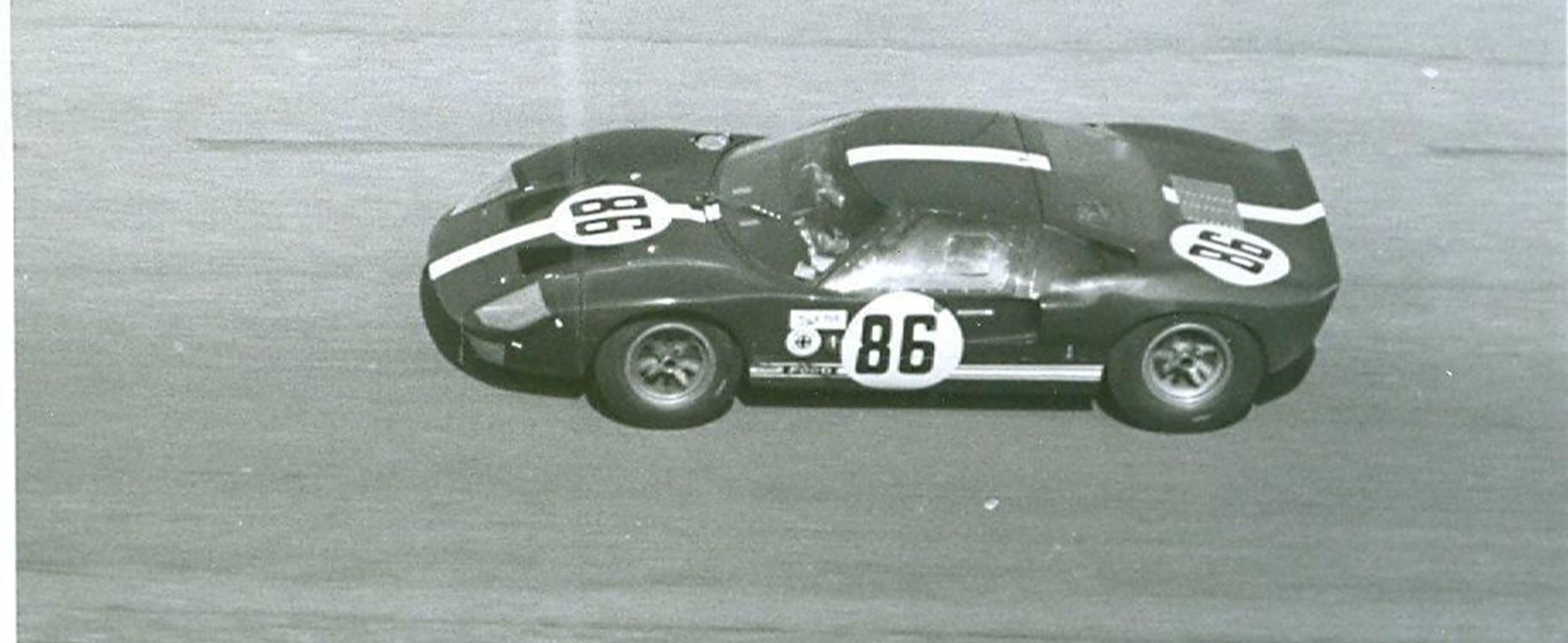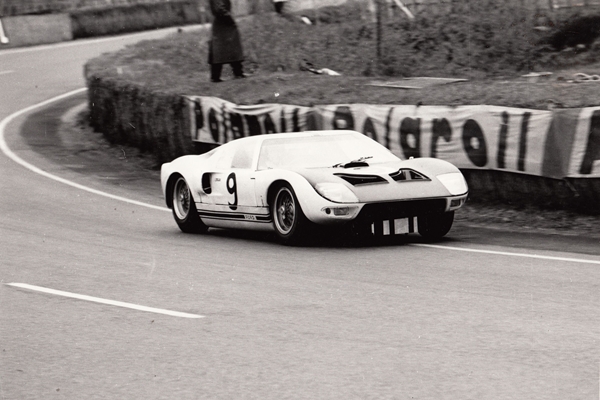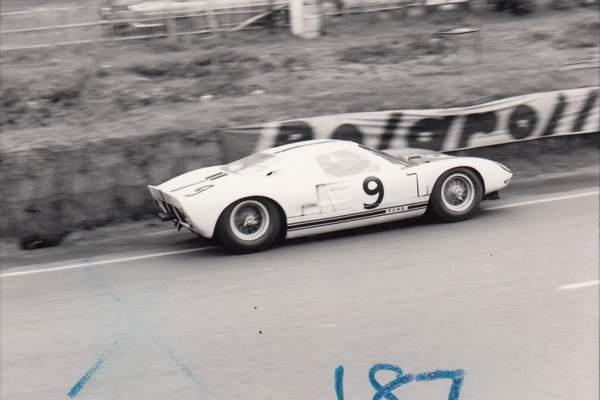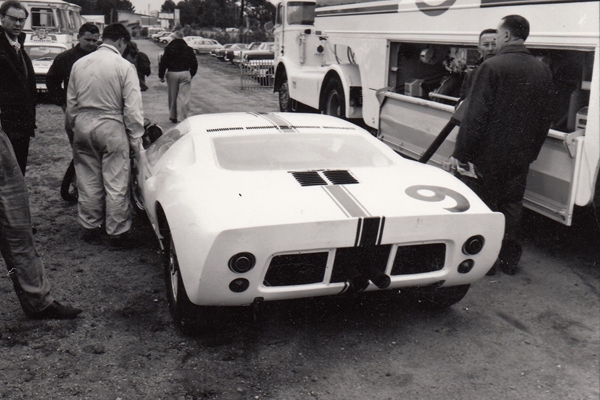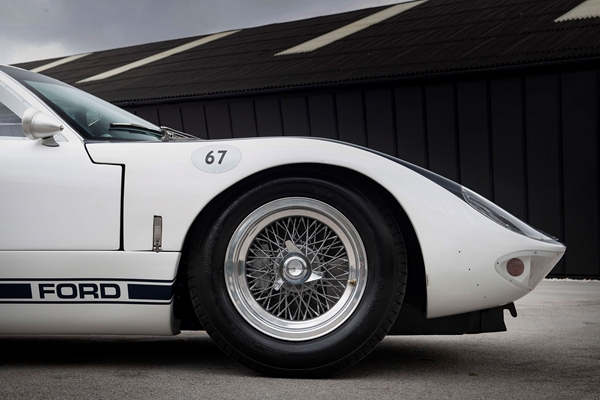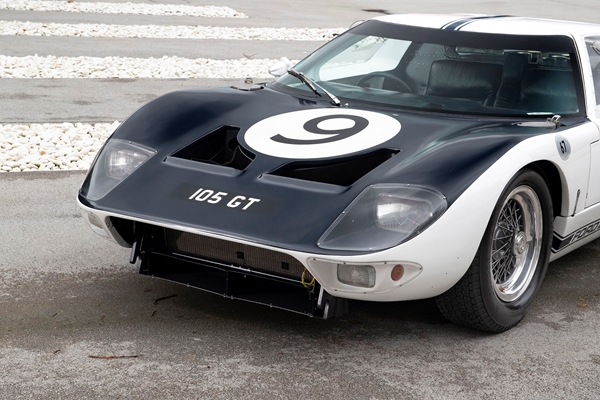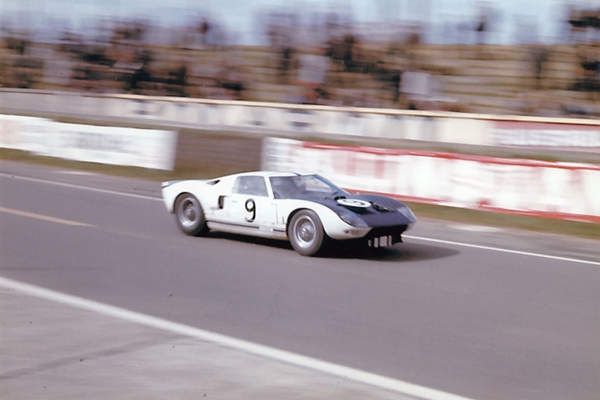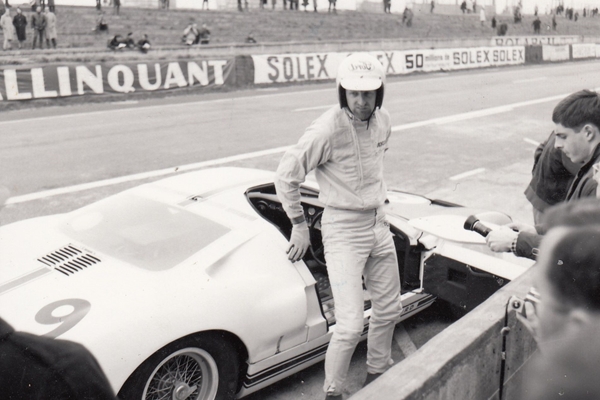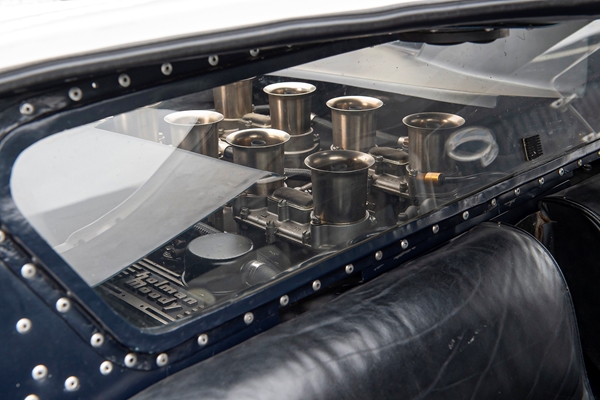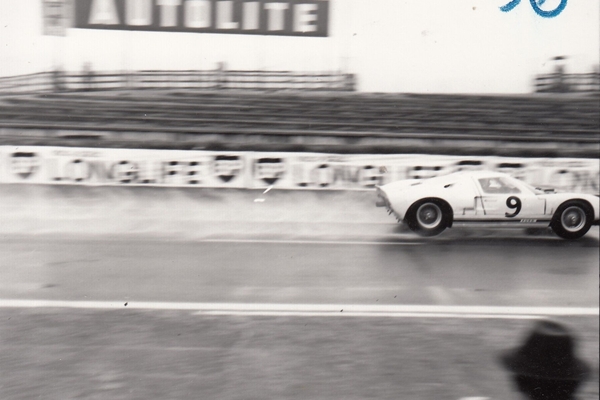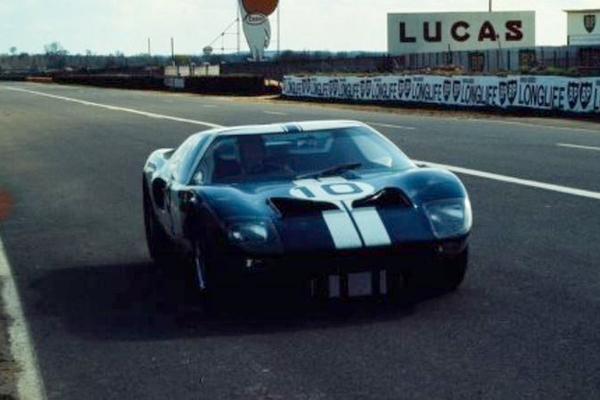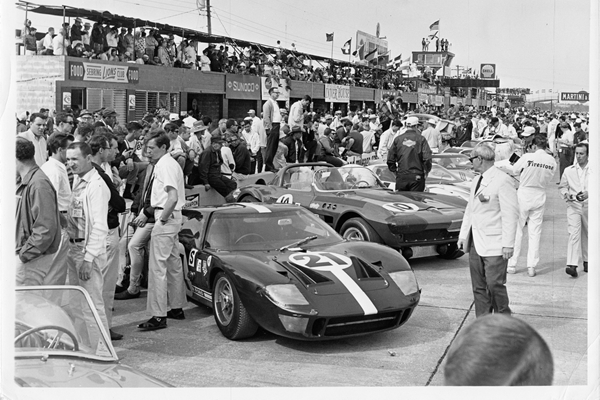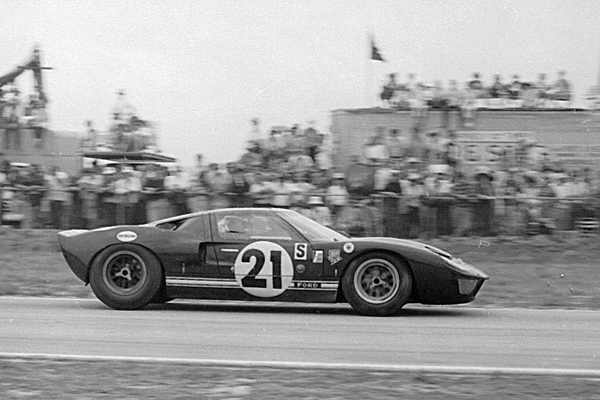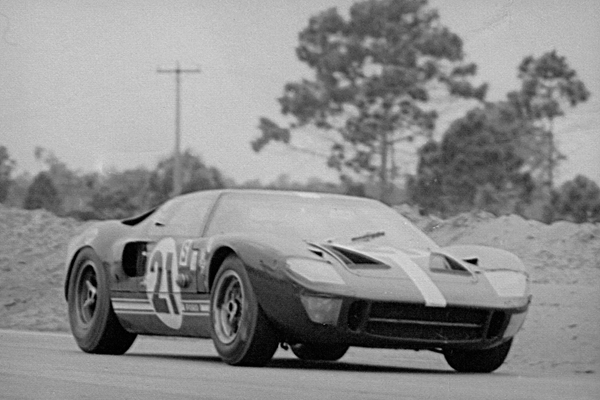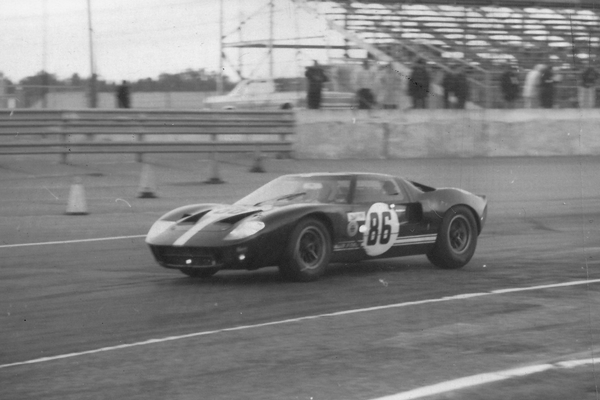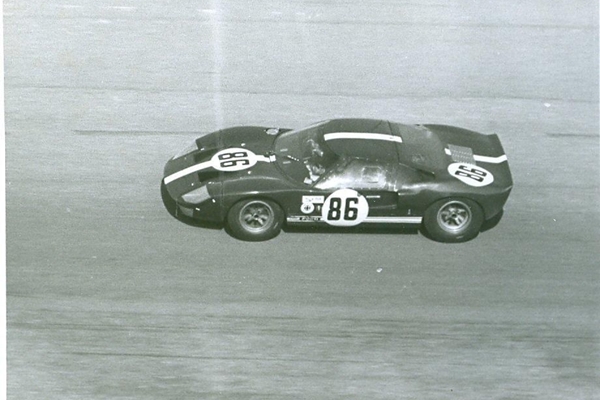1964 Ford GT40 Prototype GT/105 - One of the most original and significant competition GT40s to ever come to market
FORD, THE GT40 AND A 24 HOUR DREAM
Few automobiles have achieved such status as the Ford GT40. Detroit’s first purpose-built prototype race car was developed with one philosophy and one goal: to beat Ferrari at Le Mans. Following the huge fallout between Henry Ford II and Enzo Ferrari, the Detroit giant created an Anglo-American alliance like no other. With the greatest engineers from either side of the Atlantic and an unlimited budget, the 24-hour war began.
Using the hugely advanced, strong and lightweight Lola Mk6 prototype as a basis for the chassis design, Ford Motor Company had Abbey Panels in Coventry construct the first GT40 in March 1964, ready for the press launch at Heathrow Airport, London, England. Mated to the Ford 256 V8 Indy engine and Colotti T37 4-speed gearbox, the combination of high-tech monocoque chassis and powerful V8 engine was formulated. Immediately after the UK launch, the first car, chassis GT/101, was flown to New York to be shown to the American press at the Essex House Hotel. And that was it, the GT40 ‘Ferrari Beater’ was launched to the world and testing began.
Five works prototypes were initially built in the UK for the 1964 season – chassis GT/101, 102, 103, 104 and 105. All five cars would carry out extensive testing, development and racing miles that year – the shark-like prototypes appearing at Nürburgring, Le Mans and Reims. Thousands of miles would be covered in testing, with the greatest drivers in the world drafted in to develop the endlessly funded Ford Le Mans attack. Later in the year, chassis 103 and 104 would be shipped to Shelby American for the great Carroll Shelby to run at Nassau Sped Week, creating a relationship that would soon bear great fruit. The Achilles heel of the 1964 campaign was reliability, regularly losing results through engine and gearbox maladies, but the foundation had been laid – the GT40 was fast, Ferrari knew it, and the new upgraded 289cu/in engine and 5-speed ZF gearbox were showing great results in testing.
Over the winter of 1964 and into 1965, the GT40 we know today was truly taking shape – the bodywork was revised, and the speed was now matched by improved reliability. In particular, the Shelby American Team were making huge steps, and their hard work soon paid off, when they triumphed with chassis 103 at the Daytona 2000km (a race that would become the 24hr for 1966). Podiums at Sebring and Monza would soon follow, and with Le Mans only weeks away, spirits were high within the factory Ford team. At the Le Mans Test in April, Ford arrived with their latest weapons, three coupes and an experimental Roadster. They were fast, with Attwood/Whitmore/Trintignant 3rd in GT/105 behind the works Ferrari P2s. There was much experimentation that weekend, with bodies being swapped from car to car, rear spoilers appearing, aerodynamic wheel deflectors and even the comparison between cast Halibrands and wire wheels. They were fast, but they were not quite fast enough. The development achieved with the 289 ‘Mk1’ GT40s had given birth to a secret 427cu/in experimental car, known as the Mk2 – although not at the Test, Ford had two prototypes back at base, and both would be unleashed for the 1965 24 Hour. The theory was that the bigger, less stressed, more powerful 427cu/in engine and larger, more robust gearbox would be the final ingredient needed to win Le Mans.
Come qualifying for the 1965 24 Hour and it was clear that Ford had something special – the Mk2 of Amon and Hill qualifying a full 5 seconds clear of the Surtees/Scarfiotti works Ferrari 330 P2. Ford would also lie 3rd, 4th and 5th in qualifying, leaving a very clear message for their Italian enemy. But race day was not to be, all six GT40s hobbled by head gasket, gearbox and clutch issues. Ferrari would triumph again.
With more money made available for the development of the GT40 Mk2 and with that extra year of development, Ford would return in 1966 and take a 1-2-3. They would return in 1967 with the MK4, win again, something they repeated again in 1968 and ’69 with the wonderful Gulf GT40 Mk1, now equipped with the 5-litre Weslake-developed engine. Not only had Henry Ford’s dream come true – he had ruled the world for four years, and he had won the war.
CHASSIS GT/105
Along with GT/101, 102, 103 and 104, GT/105 was completed in early 1964, and is one of four factory lightweight prototype examples. It was a test, development and race car for the factory team, and is the highest test mileage example still in existence. It was the first GT40 to ever run the howling 289cu/in Ford V8 (an engine it had from birth) and the first GT40 to ever run the ZF gearbox. It would also be the first GT40 fitted with the stunningly beautiful and iconic production bodywork. It was the 1965 Le Mans Test car, and competed at Reims, Sebring and Daytona as a works car. During its life as a factory racer, it would be driven by Driven by Le Mans winners, Formula 1 champions, and greats including: Richard Attwood, Bruce McLaren, Jean-Louis Schlesser, Phil Hill, John Horsman, Sir John Whitmore, Frank Gardner, Roy Salvadori, Bob Bondurant, Jochen Neerpasch, Giancarlo Baghetti, Maurice Trintignant, Peter Sutcliffe, Bob Grossman, Innes Ireland and Umberto Maglioli.
Since life as a works car, GT/105 has never been damaged, and has an unquestioned and unbroken ownership trail. As confirmed by the original engineer who built the car, John Etheridge, GT/105 retains its original chassis, along with all the little scars and modifications from its three years of development at the Ford factory. Of the five original prototypes, only three remain (103/104/105) with 101 and 102 scrapped in period. 103 and 104 are now house permanently in the Shelby Museum, so 105 represents a unique opportunity to acquire one of the most important Ford GT40s in existence. Indeed, it is likely to be the earliest GT40 made available for several generations.
GT/105 was one of five prototypes that laid every inch of foundation for Ford’s Le Mans domination, and it is a significant piece of this amazing and victorious Anglo-American effort. GT/105 represents the first chapter in one of the most iconic and mythical stories in the history of the sport.
POA ENQUIRE ABOUT THIS VEHICLE






